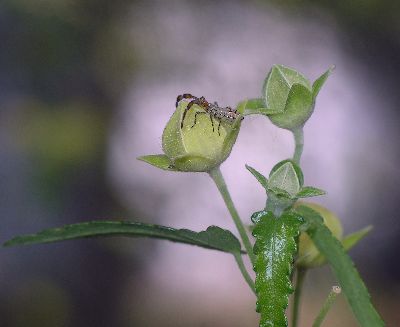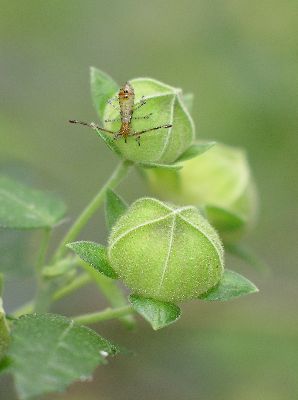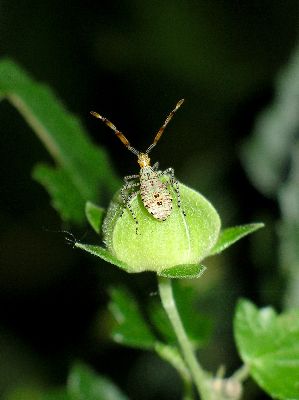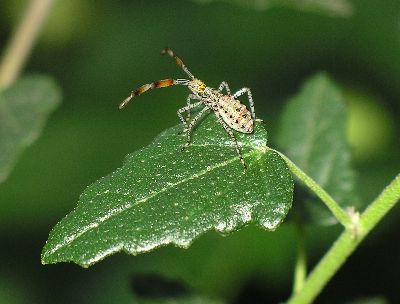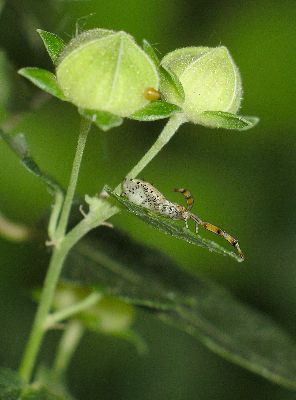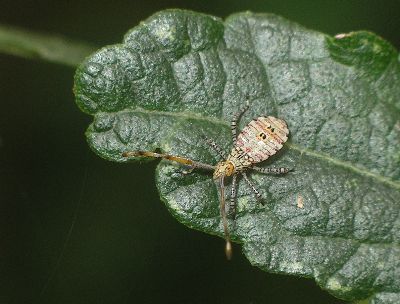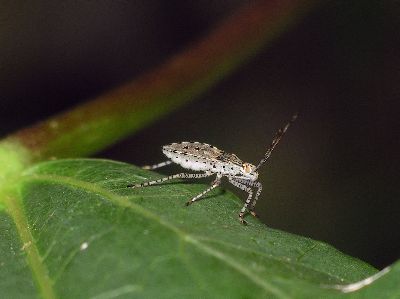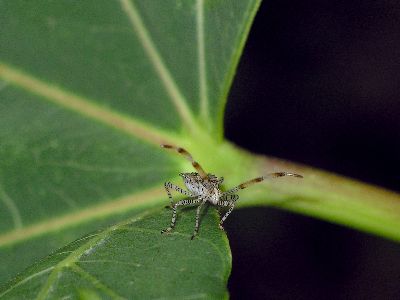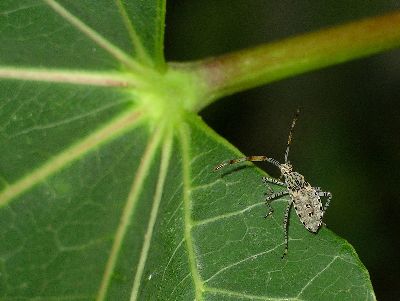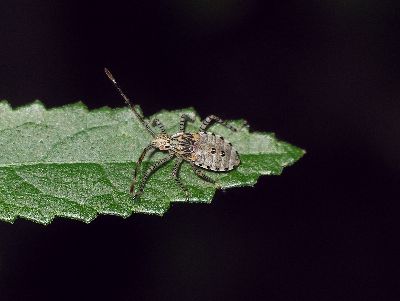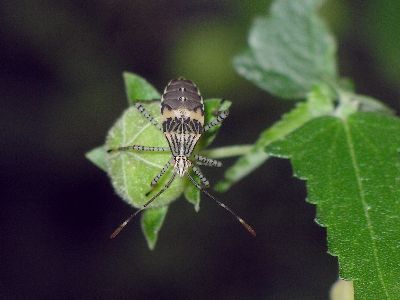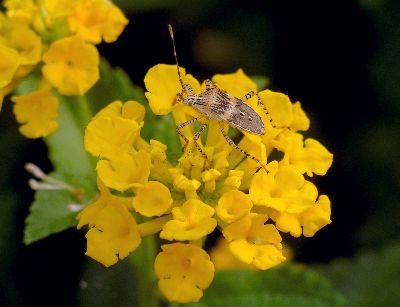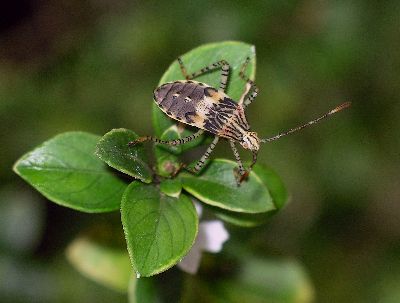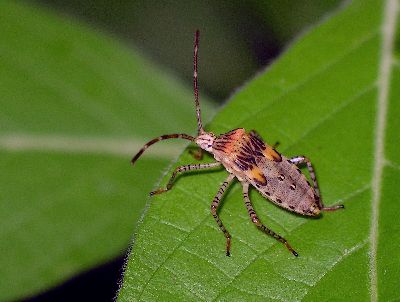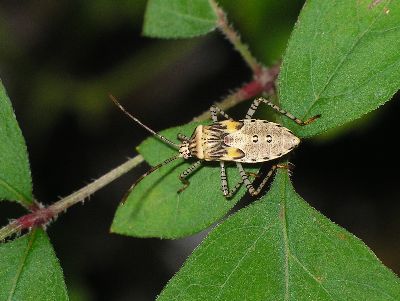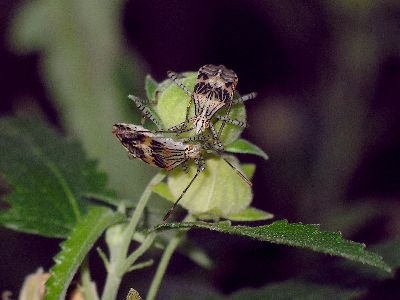The images presented in these galleries are reductions of photos taken by Valerie with a Pentax Optio 450 digital camera. The compression has been increased to 80% (100%=no compression) and the dimensions reduced in order to save bandwidth and facilitate page loading. The information below each image gives the size in pixels and kilobytes of the original file as well as the title by which to request the larger version. All of the original files are in jpeg format, most at about 95% compression, and are suitable for printing, desktop wallpaper, or detailed study. While the images here are free for the taking (right click - save as; do not link to these images directly), the larger versions are also available by sending a request to Valerie via . The frames around the gallery photos are not part of the same file and are only for presentation on this site.
Although the photos are free to use, they are copyrighted by LARVALBUG and remain the property of the owners of this site. We request that any public use of these images be accompanied by a credit to LARVALBUG.COM and, when appropriate, a link to our site (<a href="http://www.larvalbug.com/">LARVALBUG</a>). Commercial use of the large files can be arranged for a modest fee.
To request larger files or ask any questions please send an e-mail to Valerie at .
|
|
Coreid Bug (Hypselonotus punctiventris). This is one of my favorite insect subjects. Although the coreid bug shown here is frequently encountered around Austin, it seems to have no common name, hence the generic taxonomic term. All the photos on this page are of immature insects. Adults are shown on another page for this species. An article on this coreid bug in our newsletter archives provides more information on this insect.
Since the adults are only about ½ inch long, the newly hatched baby bugs are so small that I've never seen them. Bugs go through 5 molts to reach adulthood. Each stage through which the nymph passes is called an instar. The photo above shows a 2nd instar, which is still pretty tiny.
The 2nd instar is rather translucent, a characteristic that is lost with the next molt. This bug is feeding on the bud of Spearleaf swampmallow (Pavonia hastata).
The 3rd instar of the coreid bug is, of course, a little larger. The markings become darker and better defined. More detail is discernible when the insects reach this size, such as the color and shape of the antennae.
Another 3rd instar. The various stages of the nymphs of many true bugs are so different from the adults that the only way to be sure of the identification is to watch as they develop day after day in the garden.
In a side view of a 3rd instar, the large antennae show to best advantage. It is probably no accident that the early instars have thick antennae which look and move remarkably like the front legs of certain jumping spiders. I have been fooled at first glance more than once.
Bold patterns and bright colors are usually a sign that an insect is poisonous or distasteful. That, plus the spider-like appearance of this 3rd instar, probably gives a degree of protection to otherwise small, soft, vulnerable insects.
A 4th instar. The bug now has a more characteristic shape, and is not quite so bulb-like in form. Throughout all stages, the striped legs are a useful identifier.
In the 4th stage, the antennae are still rather large, and the bug moves them in the spider-like fashion. However, they do not seem to be much bigger than in the previous phase, and so are a bit smaller in proportion to the rest of the body.
Another 4th instar. The young nymphs of this species do not congregate as do a number of other herbivorous bugs. They can sometimes be found next to other species, but it is only chance that brings them together.
In the 4th instar, the small wing pads are visible. For this species of coreid bug, they are so cryptically marked that they are hard to discern.
The 5th instar is the last stage before the bug reaches maturity. The size is almost as large as the adults, and many features are easier to recognize.
Although the stripes appear to be gaudy, in certain settings, they disrupt the outline of the insect and work as camouflage. This 5th instar is on the blossoms of lantana.
The photo above and the next two all show 5th instars, with highly diverse coloration. After seeing a lot of adults, it appears that males are slightly more colorful, but the stripe patterns and relative lightness or darkness is just individual variation.
The shape of the younger nymphs is relatively flat, with a small pronotum (shoulder area). However, by the 5th instar, the hump over the developing wing muscles is prominent.
Only by the 5th instar do the antennae appear thinner and adult-like. The wing pads are very prominent, but the back of the abdomen is still bare. In adults, this area is bright red but only shows when the bug is flying.
This pair of 5th instars appear to be a male and female, if color can be an accurate guide. Perhaps they are getting to know each other in preparation for their impending maturity.
|
